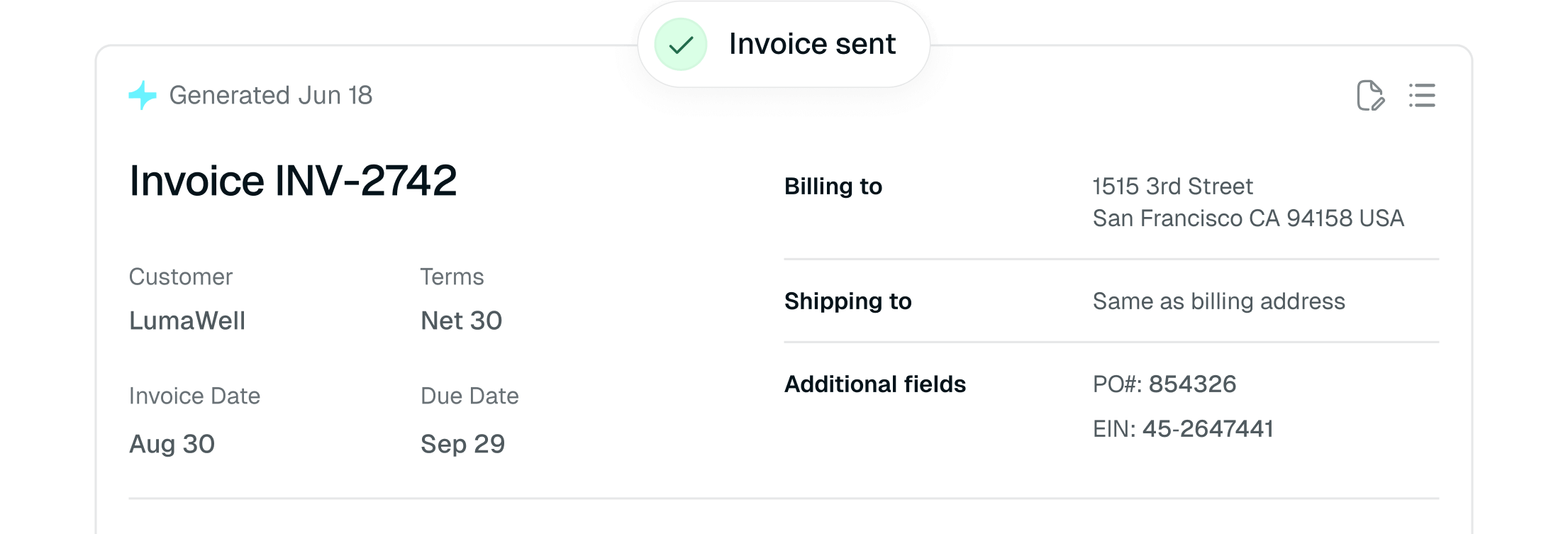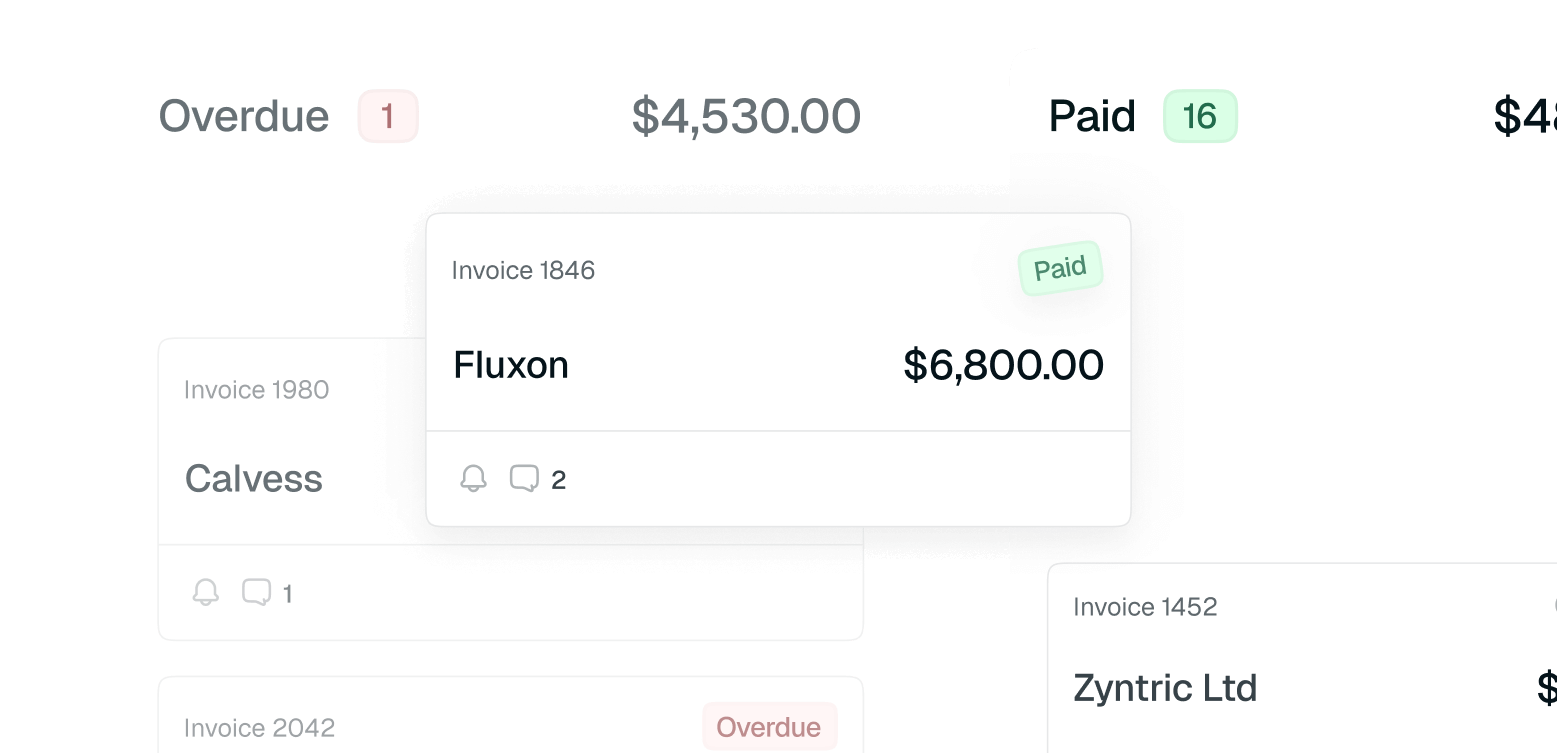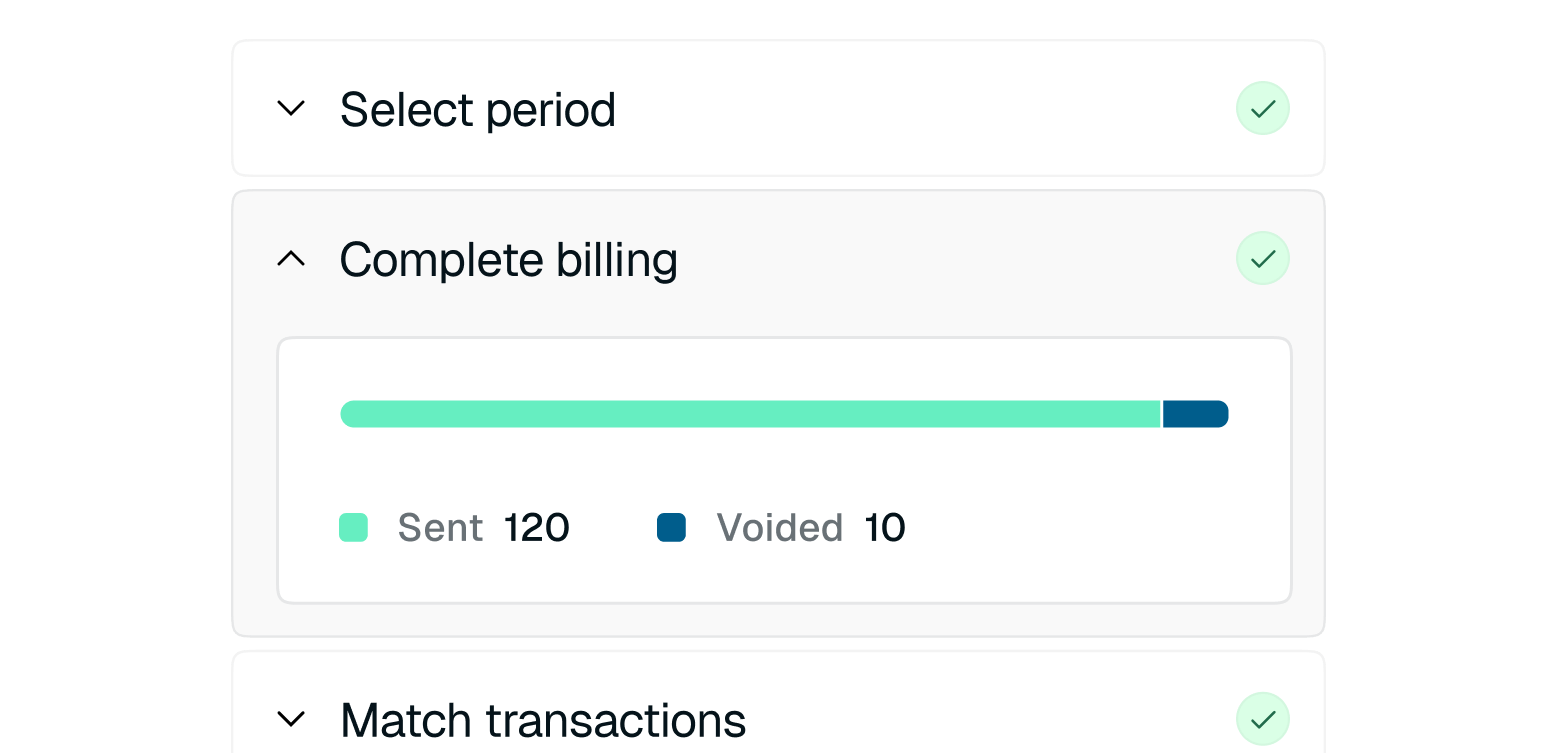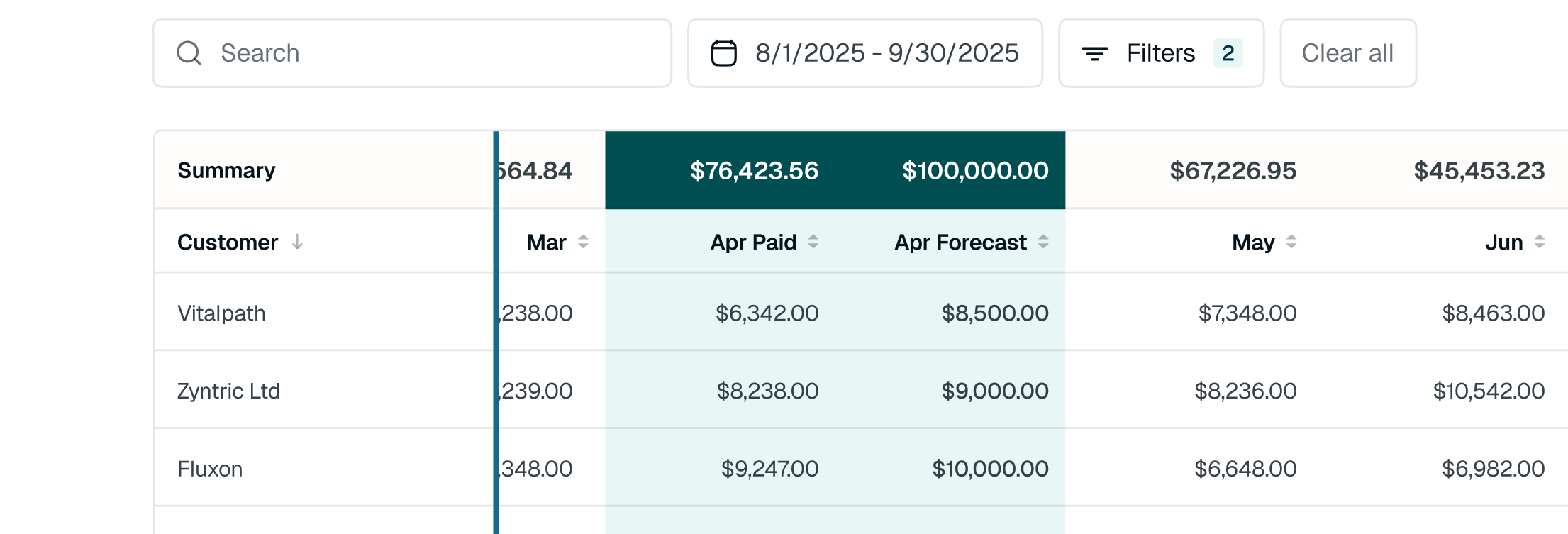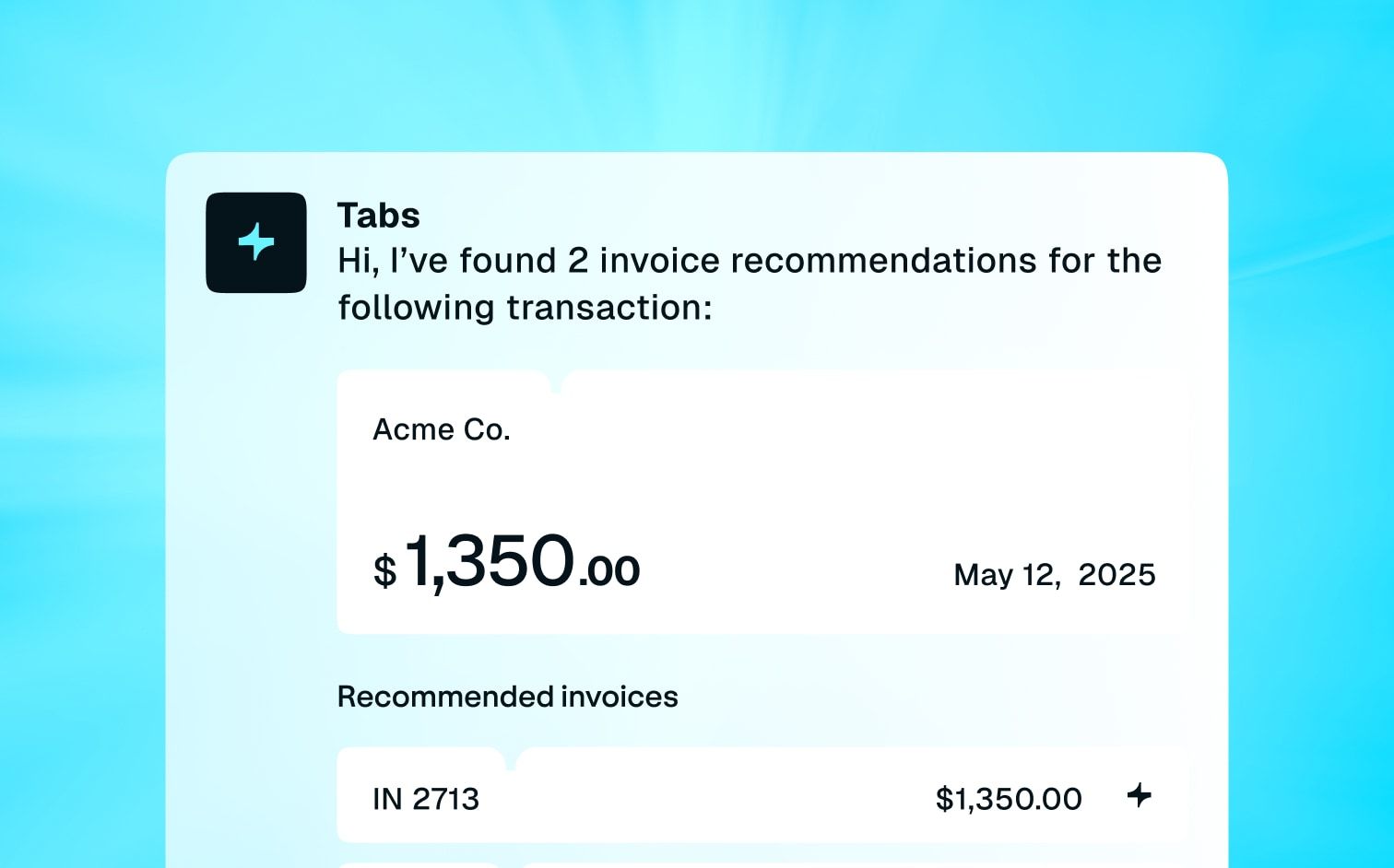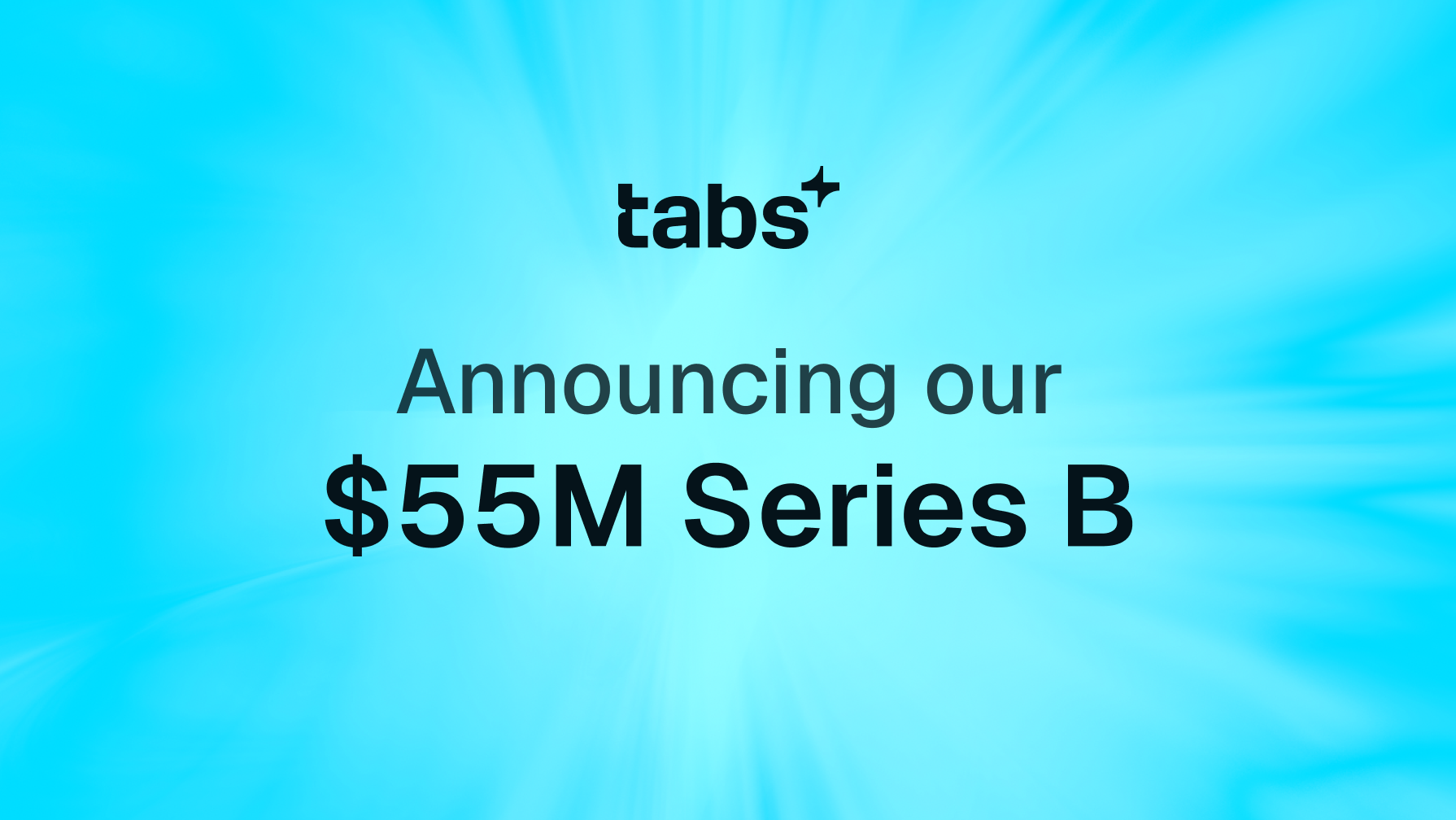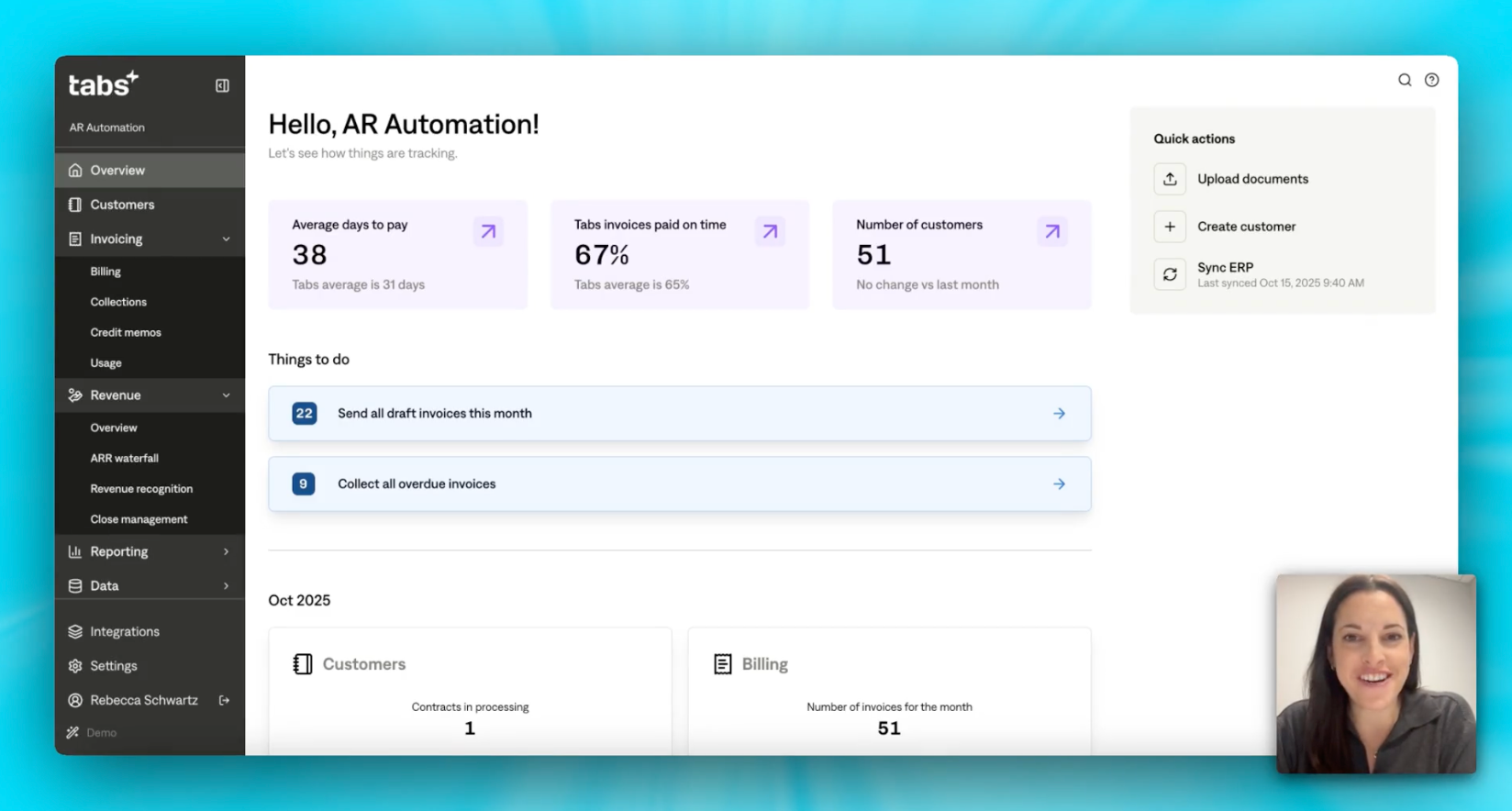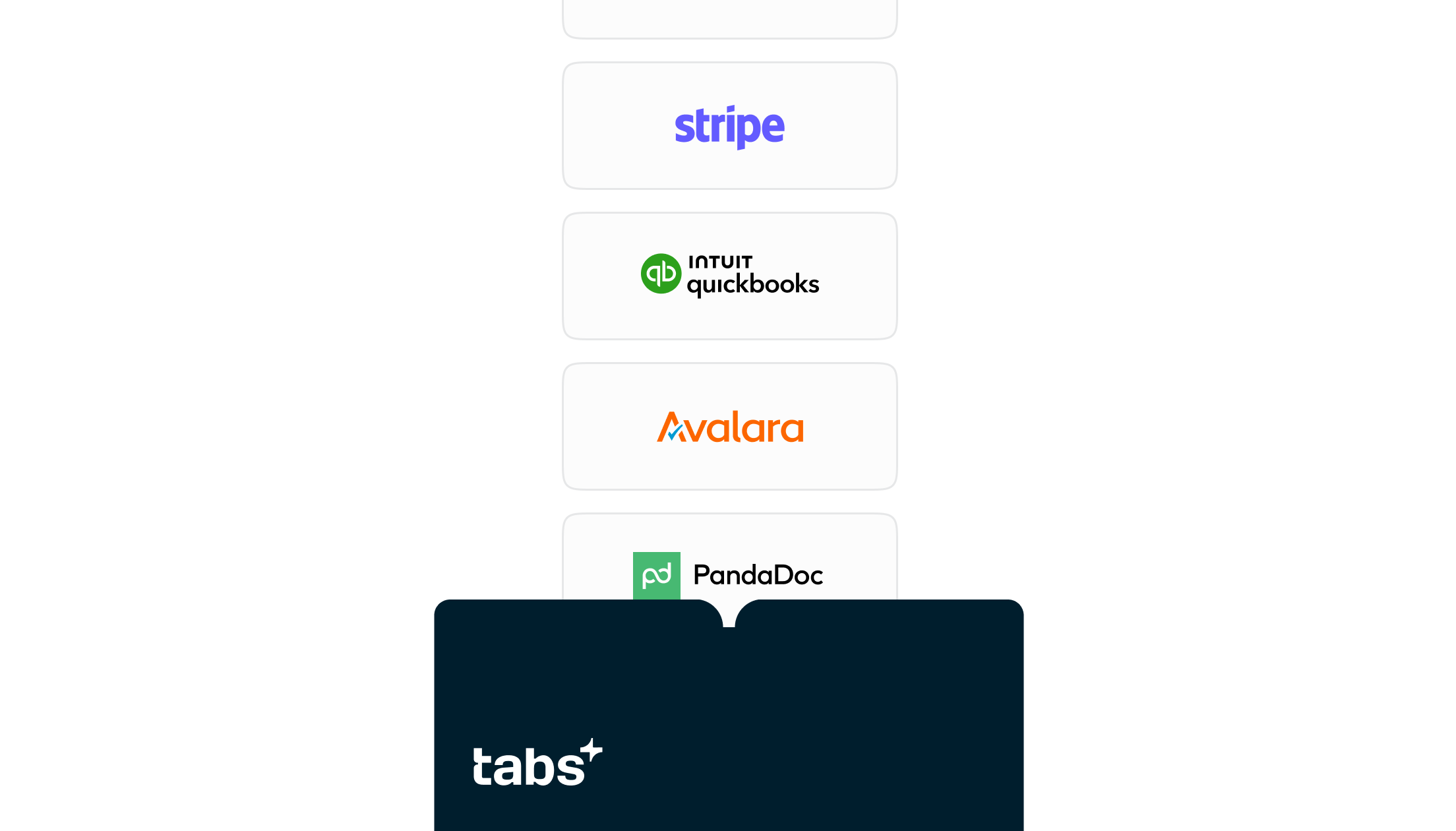
Subscription-Based Billing
Customers pay a flat recurring fee (monthly, quarterly, annually) for ongoing access to a product or service.
Example: A SaaS tool charges $250/month for access to its platform.
Auto-renewals, prorations, ramped contracts, discounts, and billing terms
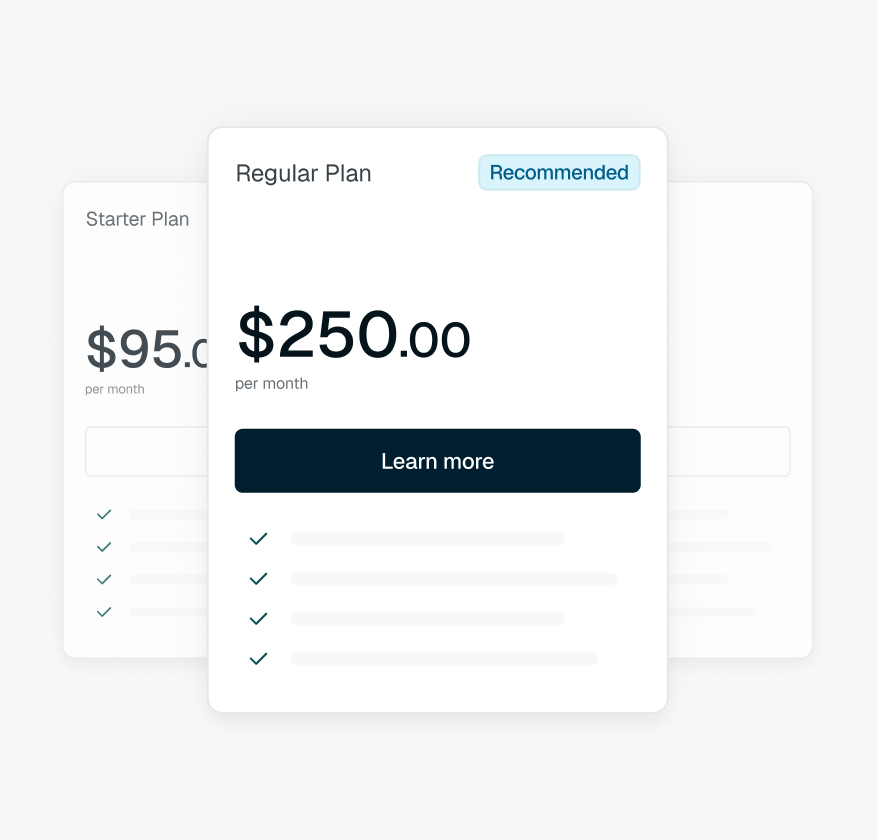
Usage-Based & Metered Billing
Customers are charged based only on the amount of product or service they use, with no upfront commitment or minimum spend.
Example: An cloud infrastructure company charges $0.10 per API call, invoiced monthly based on actual usage.
Real-time ingestion of usage data, rating, and invoice generation
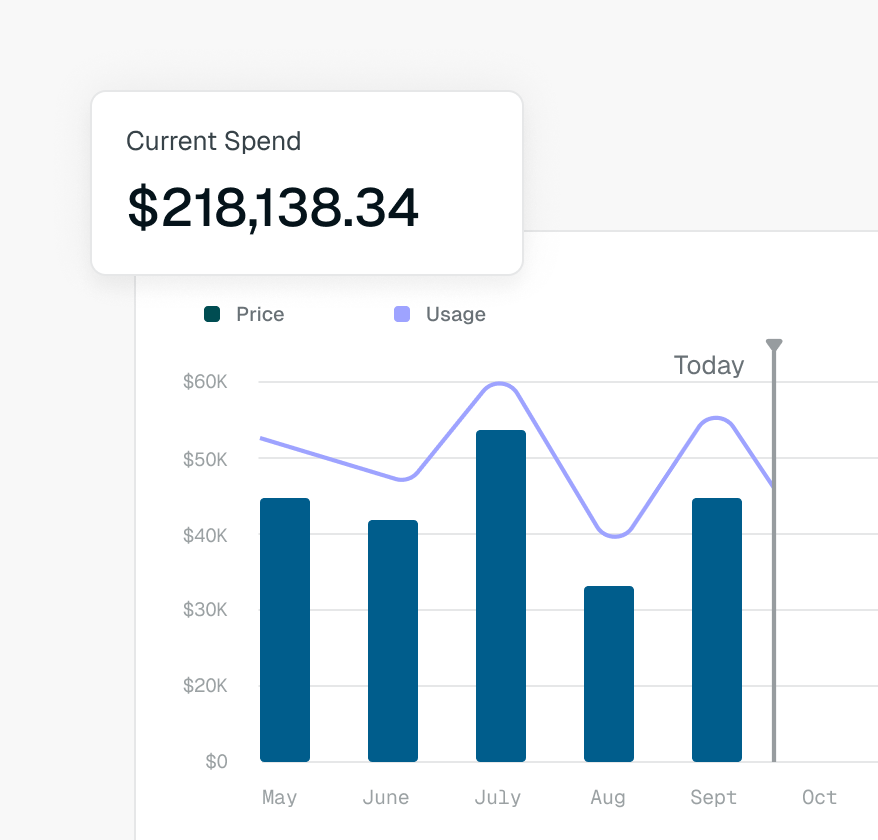
Usage-Based & Metered Billing
Pricing is structured in tiers, where unit rates change once usage crosses certain thresholds.
Example: First 1,000 messages at $0.10 each, next 9,000 at $0.08, then $0.05 beyond 10,000.
Multiple billing elements on a single invoice and flexible pricing configs
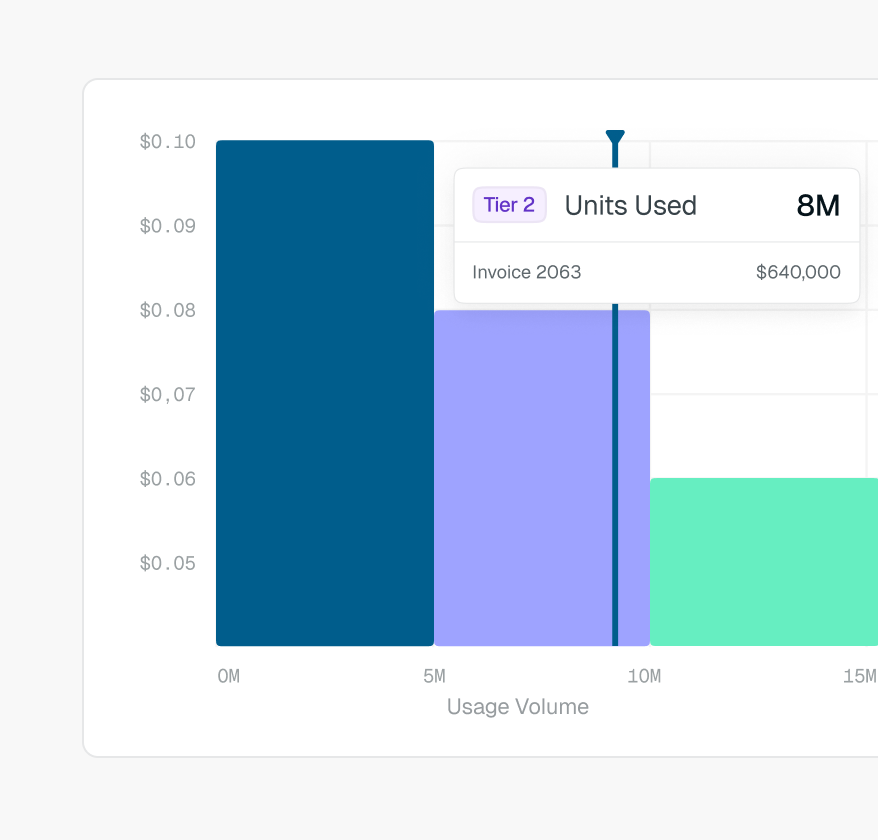
Usage-Based & Metered Billing
Billing is tied to specific results or performance outcomes, rather than just time or usage.
Example: A support platform charges $0.99 per resolution.
Multiple billing elements on a single invoice and flexible pricing configs
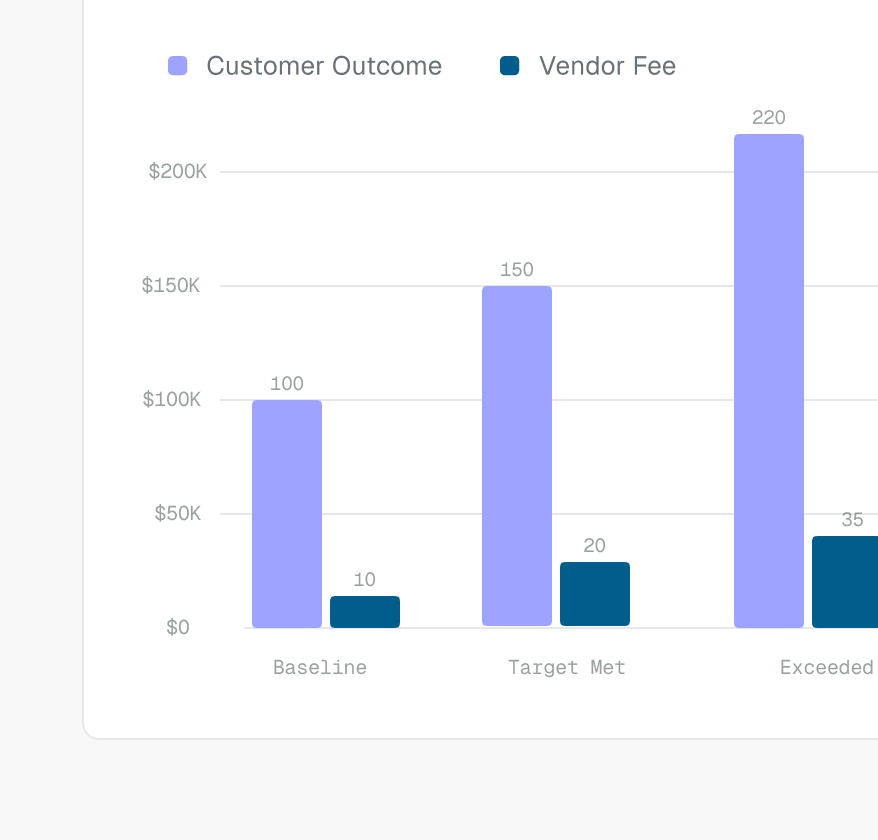
Usage-Based & Metered Billing
Customers pay in advance for a set amount of credits, which are then consumed as they use the product or service.
Example: A data provider sells $50,000 of prepaid API credits, which customers draw down as they make requests.
Milestone tracking, contract-based triggers, and partial invoicing
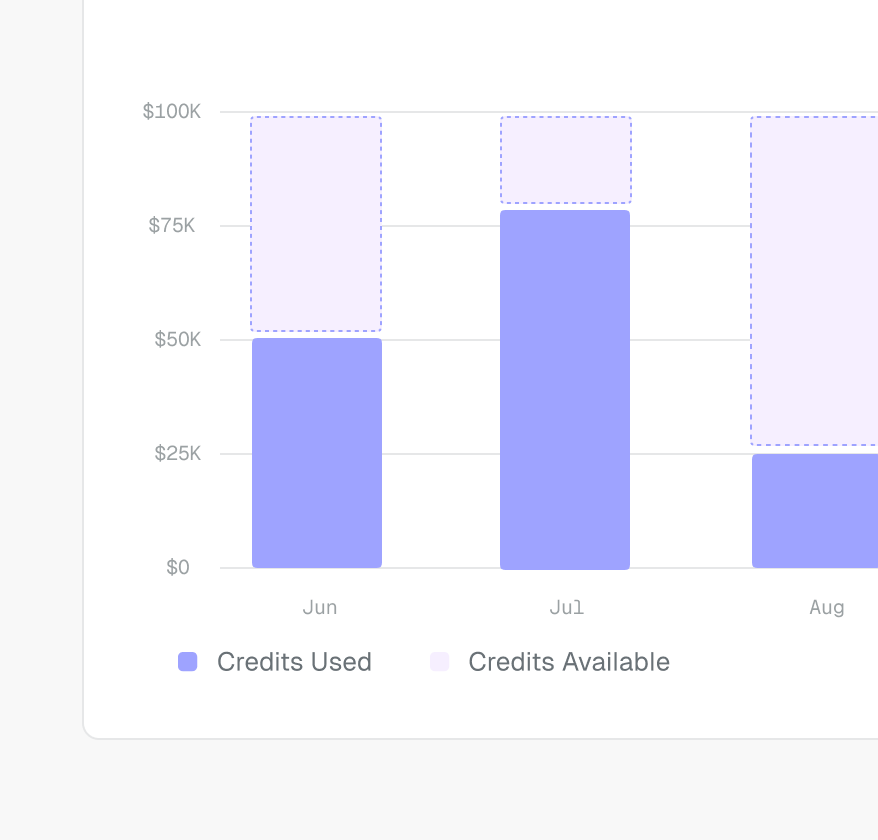
Usage & Metered Billing
Customers commit to a minimum spend over a period of time, and their actual usage is tracked against that commitment.
Example: A payments platform requires a $100,000 annual minimum transaction volume, with overages billed at standard rates.
Real-time ingestion of usage data, rating, and invoice generation
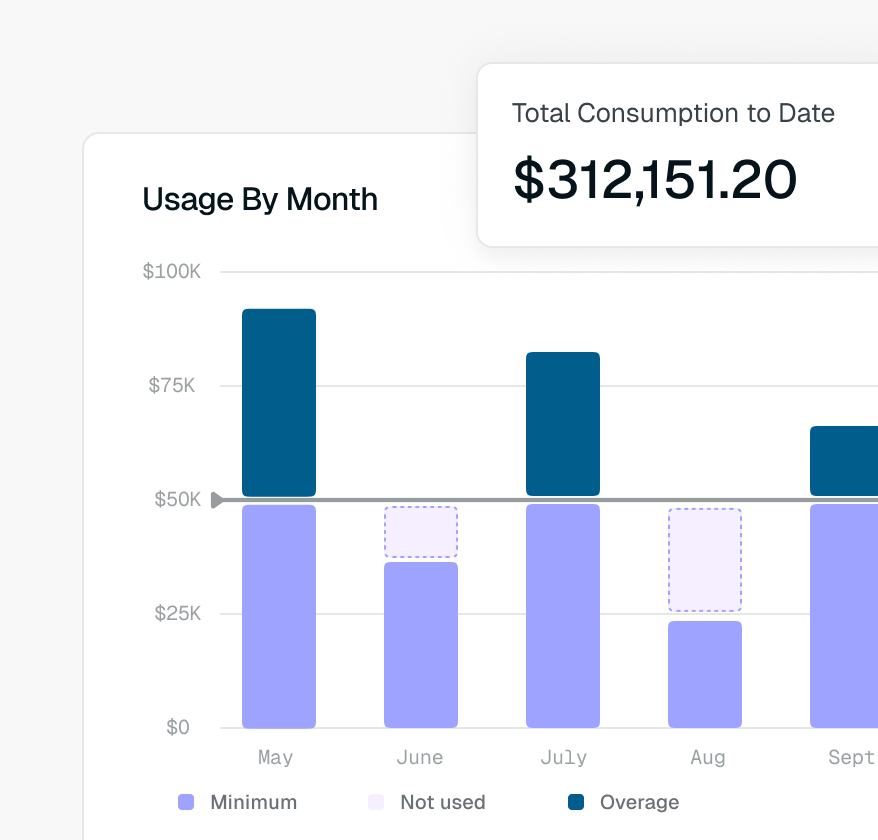
Usage-Based & Metered Billing
A contract includes multiple commitments across different products or services, all tracked and billed under one agreement.
Multiple billing elements on a single invoice and flexible pricing configs
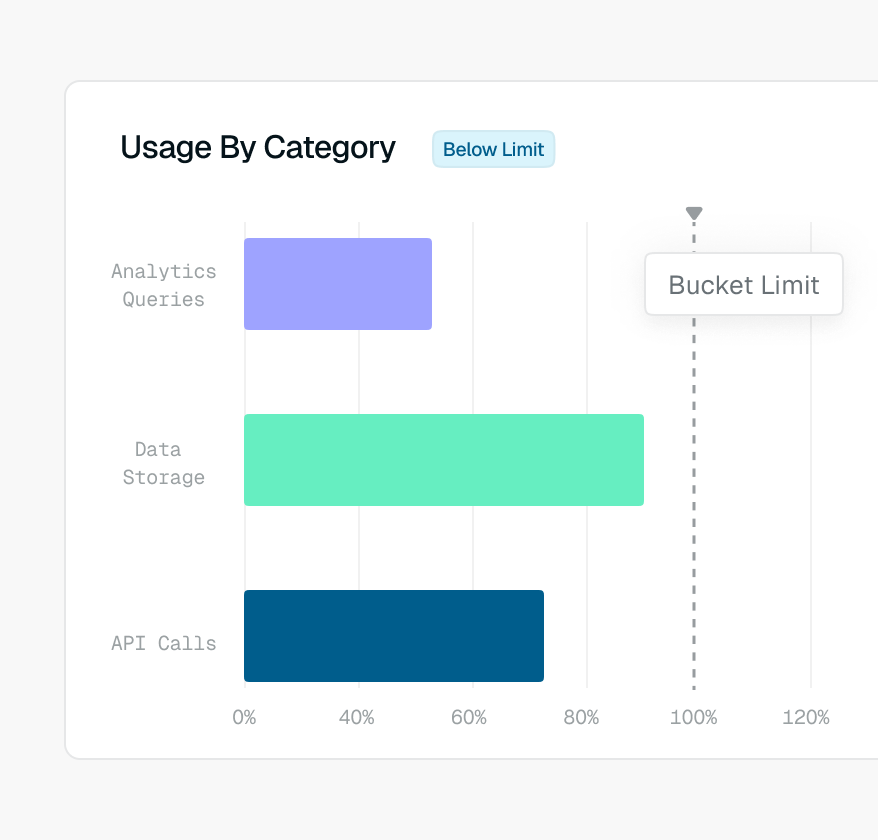
Usage-Based & Metered Billing
Invoices are triggered by the completion of predefined project milestones or deliverables.
Example: A services firm invoices 25% at project kickoff, 25% at design handoff, 50% at launch.
Multiple billing elements on a single invoice and flexible pricing configs
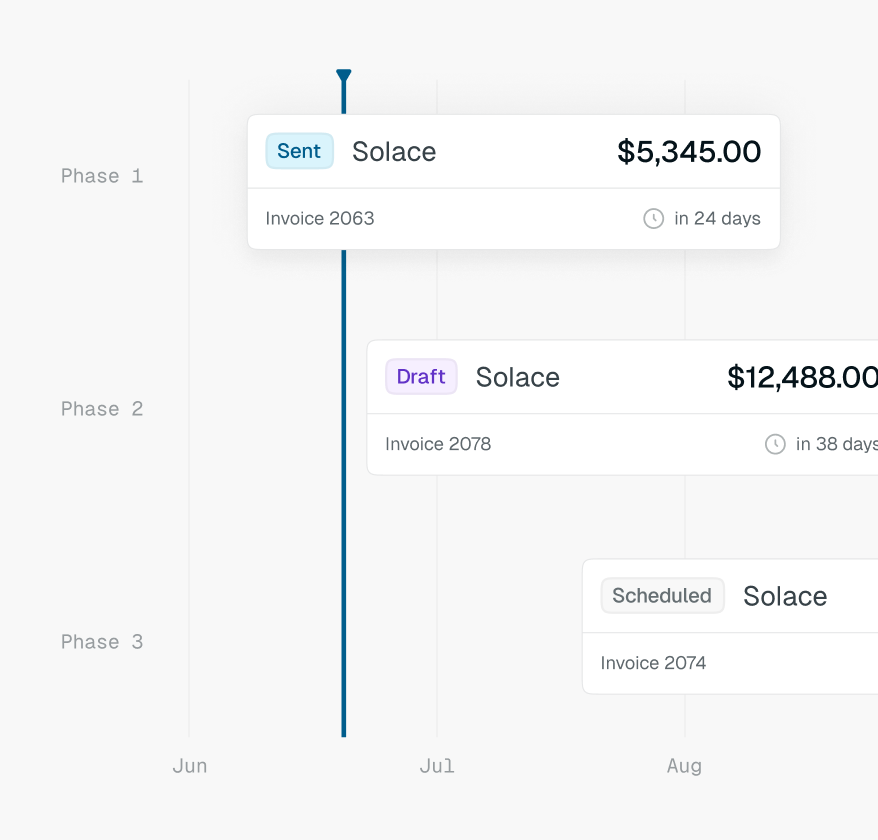
Hybrid Billing Models
A contract that combines multiple billing models into one such as a base subscription fee plus usage-based overages or product-led growth (PLG) plus sales-led growth (SLG).
Multiple billing elements on a single invoice and flexible pricing configs
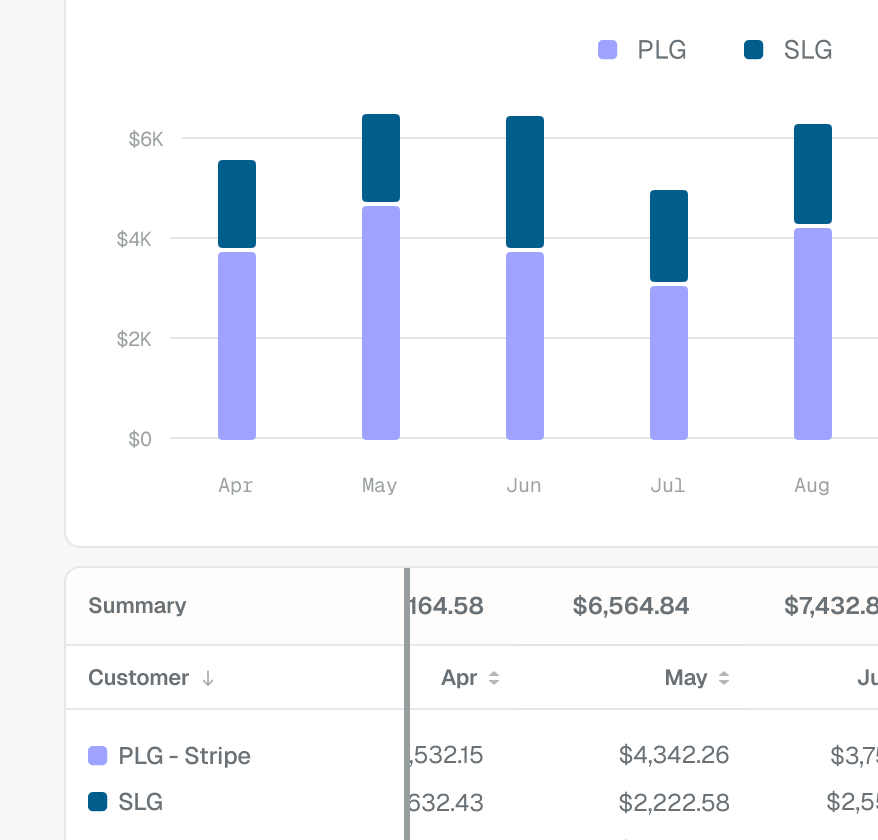
Seat Based Billing
Customers are charged based on the number of active seats or licenses tied to their contract, often with dynamic adjustments as teams grow or shrink.
Example:
A SaaS company charges $50 per seat per month. When a customer adds 20 new users mid-contract, a true-up invoice is automatically generated for the additional seats.
Automated true-ups when seats increase mid-contract, proration options (immediate, co-term, or end-of-period), moving minimums that adjust with contract changes, API-based seat syncs from your product or CRM
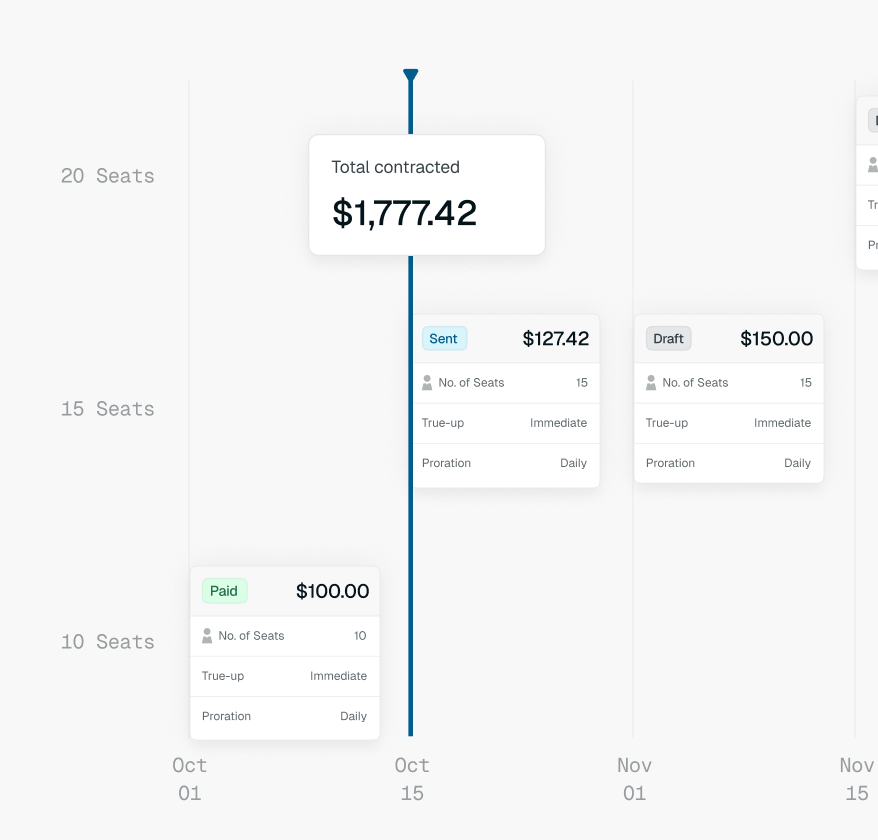

Explore the platform
